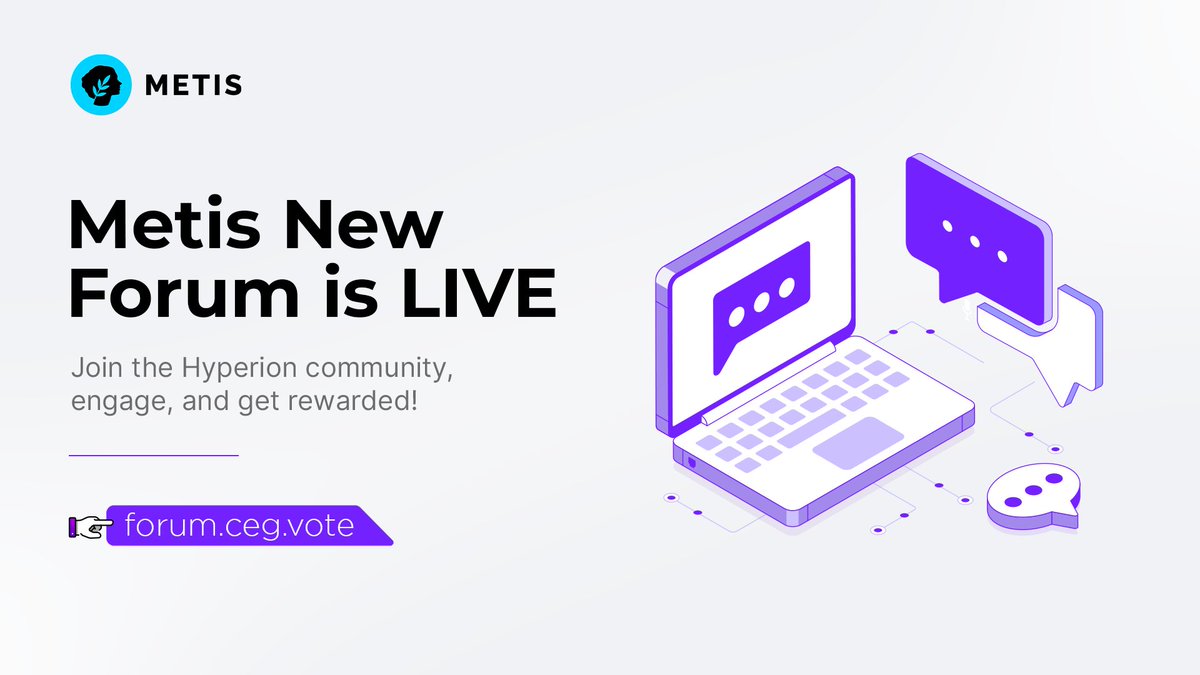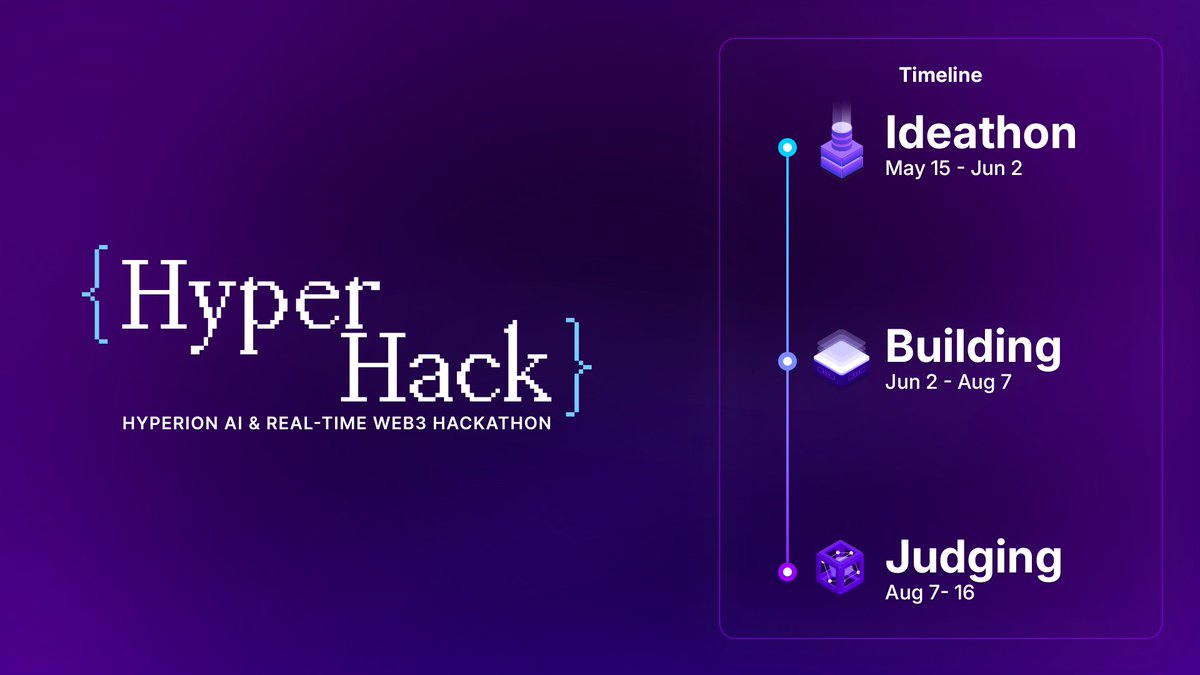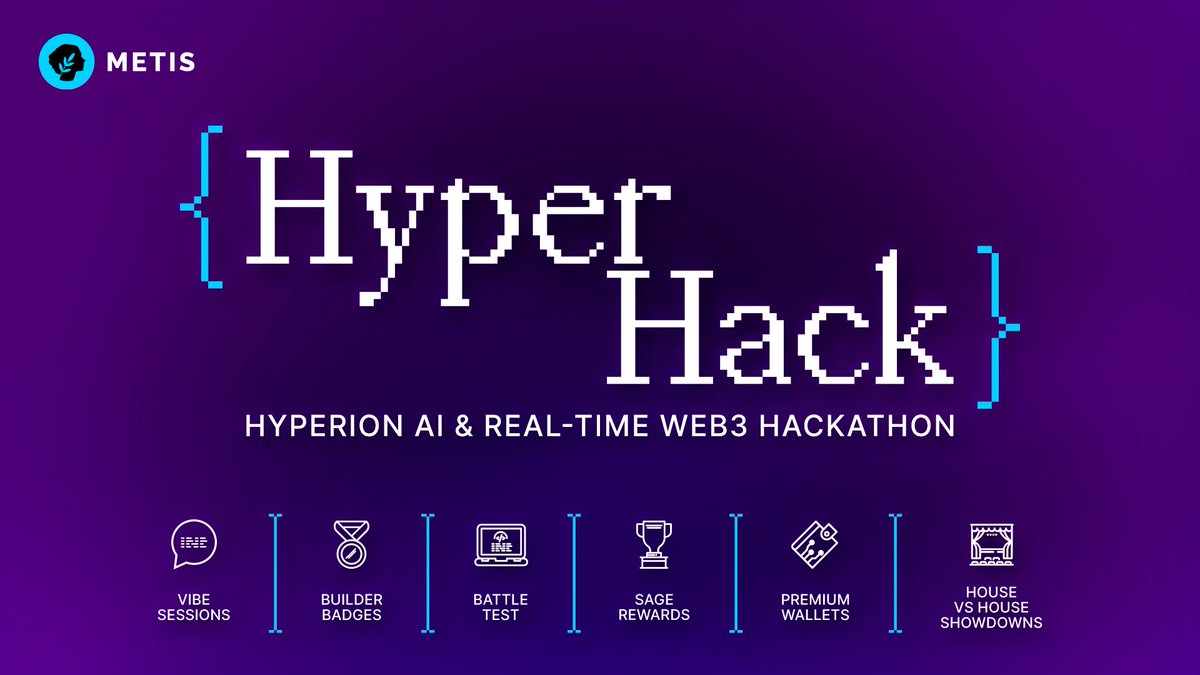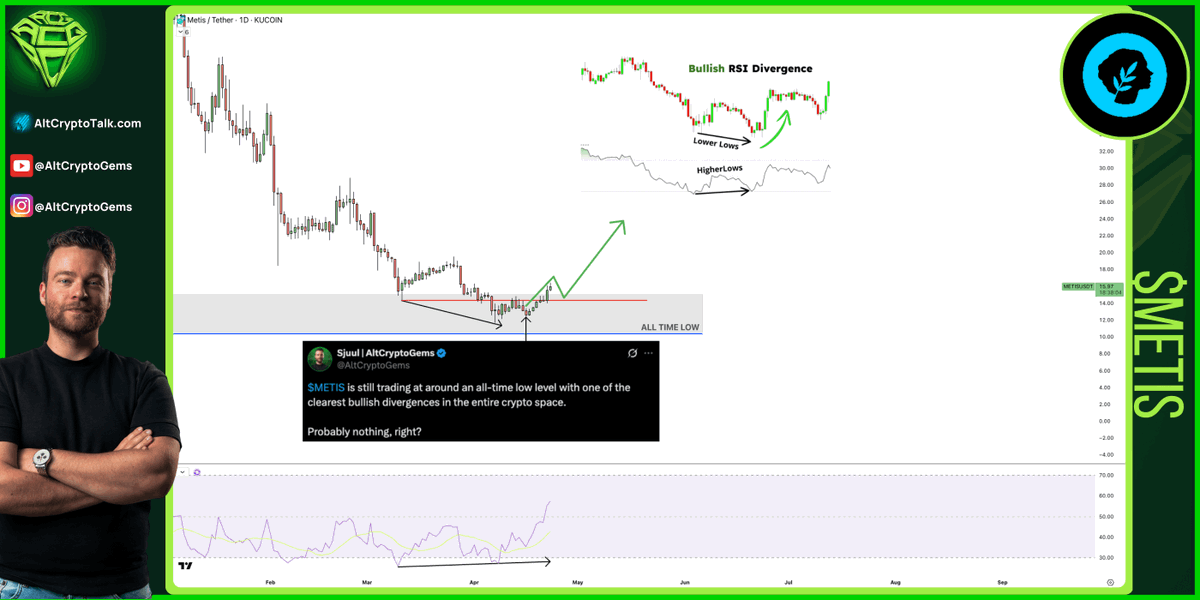MetisDAO (METIS) ist eine bahnbrechende dezentrale autonome Organisation (DAO), deren Ziel es ist, die Zusammenarbeit zu revolutionieren und Einzelpersonen und Organisationen im Blockchain-Bereich zu stärken. Metis basiert auf der Ethereum-Blockchain als Layer-2-Lösung und bietet eine umfassende Infrastruktur für die Erstellung, Skalierung und Verwaltung dezentraler Anwendungen (dApps) und DAOs. Sein nativer Utility-Token, METIS, ermöglicht nahtlose Transaktionen, schafft Anreize für Netzwerkteilnehmer und unterstützt Governance-Mechanismen innerhalb seines Ökosystems.
Was ist MetisDAO?
In der sich ständig weiterentwickelnden Landschaft der Blockchain-Technologie haben DAOs erheblich an Bedeutung gewonnen. Ihr Ziel ist es, traditionelle Systeme zu revolutionieren, indem sie eine dezentrale Entscheidungsfindung und gemeinschaftliche Governance ermöglichen. Unter diesen neuen Technologien sticht MetisDAO als vielversprechende Plattform hervor, die es Einzelpersonen und Organisationen ermöglicht, nahtlos und dezentral zusammenzuarbeiten.
Das MetisDAO-Team
Hinter der Entwicklung von MetisDAO steht ein talentiertes und vielfältiges Team aus Blockchain-Enthusiasten und Unternehmern. Unter der Leitung von CEO Elena Sinelnikova, der Gründerin von Cryptochicks, vereint das Team Fachwissen in den Bereichen Blockchain-Technologie, dezentrale Systeme und Community-Aufbau. Sie werden von der Vision angetrieben, ein integratives und effizientes Ökosystem zu schaffen, das es den Teilnehmern ermöglicht, zusammenzuarbeiten und gemeinsam Werte zu schaffen.
Wie funktioniert Metis?
Im Kern bietet MetisDAO eine umfassende Infrastruktur, die es Benutzern ermöglicht, dApps und DAOs einfach zu erstellen, zu skalieren und zu verwalten. MetisDAO bietet robuste Tools und Dienste, darunter ein dezentrales Identitätssystem, Governance-Mechanismen und Ressourcenmanagementlösungen.
Natives MetisDAO-Token: METIS
Das MetisDAO-Ökosystem basiert auf seinem nativen Utility-Token namens METIS. Dieser Token spielt eine entscheidende Rolle bei der Erleichterung von Transaktionen, der Schaffung von Anreizen für Netzwerkteilnehmer und der Stärkung der Governance-Mechanismen innerhalb des Ökosystems. Als Utility-Token fördert Metis den Betrieb von dApps und DAOs, die auf der MetisDAO-Plattform basieren.
METIS-Tokenomik
Metis verfügt über eine klar definierte Tokenomics-Struktur, die Stabilität gewährleisten und das Wachstum des Ökosystems fördern soll. Der Gesamtvorrat an METIS-Token beläuft sich derzeit auf 5.410.000 Token, davon sind 4.466.402 im Umlauf. Ein Teil des Token-Angebots wird bereitgestellt, um Anreize für Early Adopters, Mitwirkende und die Community zu schaffen. Diese Zuteilung fördert die aktive Teilnahme und den Beitrag zum MetisDAO-Ökosystem.
METIS-Staking
Das Staking von METIS-Tokens ist ein entscheidender Aspekt des Ökosystems, der es Token-Inhabern ermöglicht, sich an der Sicherung des Netzwerks zu beteiligen und aktiv Belohnungen zu verdienen. MetisDAO bietet verschiedene Absteckoptionen, darunter Abstecken im Mainnet oder die Teilnahme am Liquiditätsabbau an unterstützten dezentralen Börsen (DEXs).
METIS Anwendungsfälle
METIS hat mehrere Anwendungsfälle innerhalb des MetisDAO-Ökosystems. Sie dienen als primäres Tauschmedium für Transaktionen innerhalb des Netzwerks. Metis-Token werden für die Zahlung von Transaktionsgebühren, den Zugang zu Dienstleistungen und die Teilnahme an Governance-Entscheidungen verwendet. Sie werden auch verwendet, um Anreize für Nutzer, Entwickler und Mitwirkende zu schaffen und die Akzeptanz und das Wachstum zu fördern.
METIS-Token-Verteilung
Die Verteilung der METIS-Tokens ist sorgfältig strukturiert, um Fairness und langfristige Nachhaltigkeit zu gewährleisten.
- Die ersten 49,3 Prozent der METIS-Token wurden im Jahr 2021 für den Kaltstart, das Team, Berater, Investoren sowie die Ökosystem- und Community-Entwicklung geprägt
- 4,86 Prozent für Gemeinschaftsleistungen, einschließlich Mining
- 10 Prozent für Rangers-Mining im Frühstadium
- 3 Prozent für die Community-Entwicklung im kommenden Discovery Age
- 32,84 Prozent für transaktionsbezogenes Mining im kommenden Discovery-Zeitalter
Die vielversprechende Zukunft von MetisDAO
MetisDAO ist eine innovative Plattform, die die dezentrale Zusammenarbeit fördert und Einzelpersonen und Organisationen in die Lage versetzt, ihre dezentralen Anwendungen und DAOs aufzubauen und zu skalieren. Mit einer robusten Infrastruktur, einer engagierten Community und einer gut konzipierten Token-Wirtschaft ist MetisDAO bereit, die Zukunft der dezentralen Governance zu gestalten und zum Wachstum des Blockchain-Ökosystems beizutragen.






























